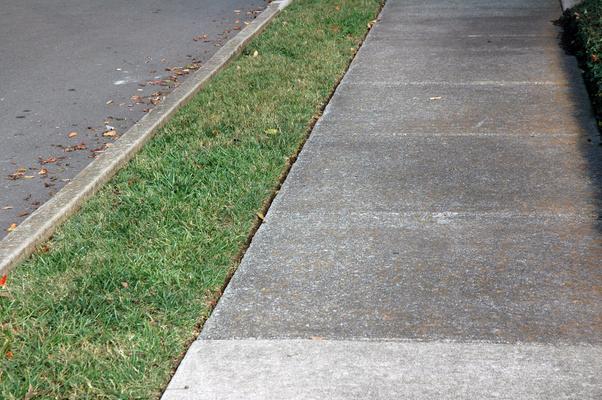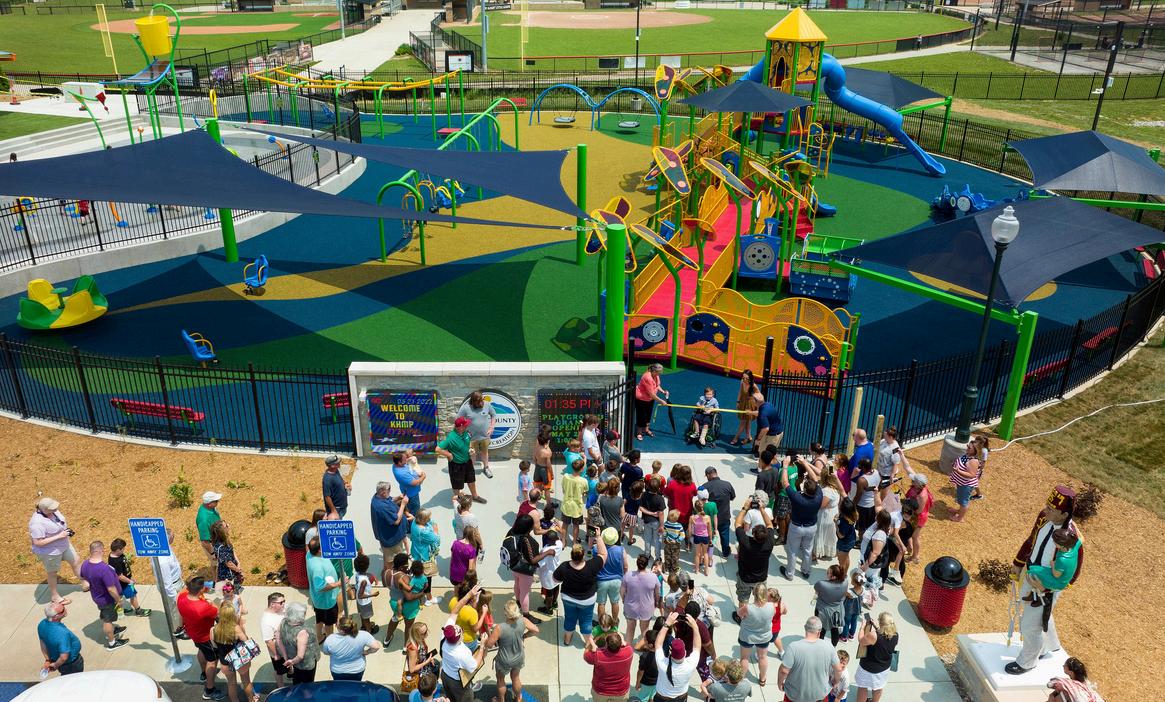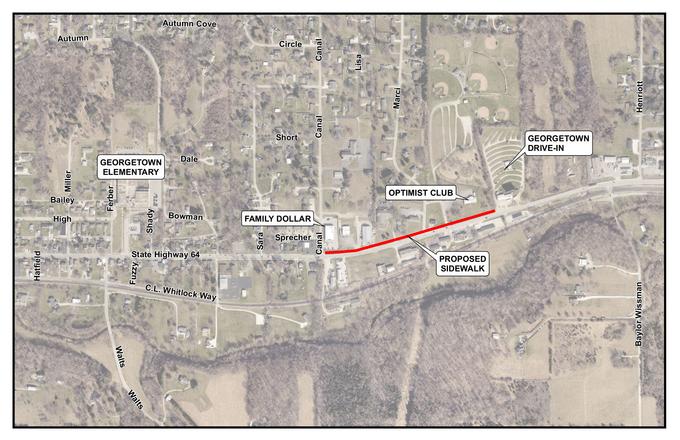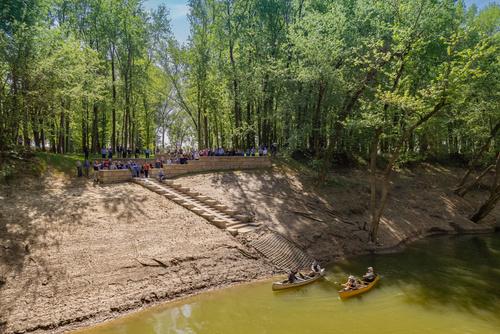QualityofPlace: PathwaystoProgress GrantsProgram





Many residents in Clark and Floyd counties lack access to safe, high-quality parks and greenspaces, particularly those who are low-income, have limited mobility, or face transportation challenges. This program aims to address disparities in park accessibility, environmental quality, safety, and sustainability.

Limited Access & Use – Insufficient parkland, lack of connectivity, and barriers for residents in rural areas.
Environmental Concerns – Poor air quality from development, traffic, and limited public transit options.
Safety Uncertainty – Insufficient data on crime and safety in parks and trails. Sustainability Gaps – Lack of funding coordination, underutilized philanthropic support, and minimal investment in parks.
Better Connectivity – Safe routes (sidewalks, bike trails, and public transit)
Park Improvements – Infrastructure upgrades for accessibility and engagement.
Community Activation – Programs, events, and marketing to encourage park use.
Collaborative Efforts – Partnerships with government, nonprofits, businesses, and funders to drive impact.
Ensuring all residents can enjoy safe, vibrant, and accessible parks and greenspaces.

# of Grant Projects targeting each of the PTP priority populations
Safe, accessible routes to parks via public transportation, sidewalks, crosswalks, bike trails, and access points Parks infrastructure that connects existing parks and ensures parks safe and accessible for people with limited mobility
Safety features and amenities available in parks
Activation of unused or underused public spaces, such as pocket parks
Advocacy and government partnerships around park and greenspace planning







LEVERAGED FUNDS
$1,200


Friends of Borden Community Park, Temple and Temple
ESTIMATED USAGE 10,000 PROJECT TIMEFRAME 2024-2025
The playground quickly became a regional draw, with over 1,000 regular users and a single festival bringing in 15,000 visitors. The ADA-compliant picnic tables and rubberized surfaces have made the park more desirable for families and schools. A large homeschooling group now meets at the park regularly, and local youth league games bring families together, strengthening the sense of community.
“All-inclusive play and picnic tables have made this a more desirable location for all children, including the 189 special needs students from local schools."
This project added an inclusive playground and sensory walk, providing a welcoming space for children of all abilities, including the 189 special needs students from local schools.
2023 CFSI Investment: $150,000



Charlestown brought new life to an aging city park, turning it into a modern, fully accessible gathering space with new playground features, solar lighting, and safety enhancements.
LEVERAGED FUNDS
$216,360
City of Charlestown Board of Public Works, Blue Recreational Products
ESTIMATED USAGE 8,000
2023
This project did more than upgrade a park – it sparked a movement. Since opening, the Disability Advisory Board was created to continue improving accessibility across the city, and local disability service providers have relocated nearby to take advantage of the space. The playground is now a go-to spot for families, and its popularity has even led the city to invest in sidewalk improvements to better connect lowincome housing to the park. Safety has improved, vandalism is way down, and residents now have a space that truly feels like home.
"Once we got this playground, the community wanted to know –what can we do next?"



This project transformed the Kevin Hammersmith Memorial Park into a true destination for inclusive play, ensuring kids of all abilities could enjoy a state-of-the-art, accessible playground.
LEVERAGED FUNDS
$1.1M
Floyd County Commissioners, Samtec Cares, Legacy Foundation, Gametime, State Program
ESTIMATED USAGE 10,000
PROJECT TIMEFRAME 2021-2022
The response was overwhelmingly positive. The playground is constantly packed, serving thousands of kids while creating a space where children with and without disabilities play together seamlessly. Parents say it’s a joy to watch kids of all abilities interact without barriers. The addition of a trail counter at the entrance shows just how many people are actively using the space - a clear sign this project filled a huge community need.
"It’s quite refreshing to see children of all abilities interacting and having a great time on this exemplar facility!"
2024-25 CFSI Investment: $150,000



This project will build critical sidewalk infrastructure along SR 64, connecting neighborhoods, businesses, and public spaces, including local parks and schools. While downtown Georgetown recently added sidewalks with great community support, much of the town remains disconnected. Currently, pedestrians are forced to walk along the railway tracks or directly on SR 64, posing significant safety risks.
This project will provide safe, dedicated pedestrian routes in an area where walking is currently hazardous. By linking neighborhoods, schools, and businesses, it will encourage more foot traffic, support local commerce, and improve overall quality of life. Sidewalks will help reduce vehicle dependency, promote healthier lifestyles, and create a safer, more connected town for residents of all ages. As awareness grows, this initiative could serve as a model for future pedestrian infrastructure improvements across the region.
“Georgetown has a walkability score of almost zero. Right now, people are walking on the railway and down SR 64, which is dangerous. This sidewalk project changes that – it connects 13 businesses, multiple neighborhoods, and a youth sports complex. It’s about safety, accessibility, and making Georgetown a more livable community.”
Bids for construction will go out in February or March 2025, with completion expected by June or July. Additionally, the town is pursuing federal funding support with the help of Congresswoman Houchin, which, if secured, could allow for further sidewalk expansion and connectivity improvements beyond this initial phase.



An underused patch of land outside the Jeffersonville Library was reimagined as a fully accessible, train-themed pocket park, blending local history with a safe, interactive space for families.
LEVERAGED FUNDS
$162,000
Jeffersonville Public Library, Jeff Library Foundation, Bales Foundation, Library Paver Sales
ESTIMATED USAGE 5,000
PROJECT TIMEFRAME2022-2023
This small but mighty project has completely changed how people experience the library. It’s now a destination, not just a stop for books. Families routinely visit for playdates, and social workers even use it for supervised visits. The park’s safety features – fencing, lighting, and cameras – give parents peace of mind, and the library has seen its highest visitor numbers since 2018. A game-changer for community engagement.
"People don’t have to choose between getting the wiggles out or going to the library – they can do both here."
2021-23 CFSI Investment:
$100,000



The Blueway Extension brought new life to the waterfront at Origin Park, creating a high-quality launch for paddlers and fishermen while adding picnic spaces, native landscaping, and better parking. The goal was to make the park more accessible, visible, and inviting to the community.
$900,000
Sam Shine Foundation, Blue Sky Foundation, Ogle Foundation, IHCDA CreatINg Places
1,000
This project did more than just build a boat launch – it put Origin Park on the map. People now actively use the space for outdoor recreation: fishing, birdwatching, and kayaking have increased, and people are engaging with the park in ways they never did before. The digital presence has also expanded, drawing in new visitors. Long term, this project fueled momentum for further investment in the $250M+ park transformation, laying the groundwork for regional economic growth – with plans for amenities to draw visitors, create jobs, and strengthen the area ’ s outdoor tourism appeal. "The greatest impact this project had is activating the park and getting it on the public’s mental map."
This program is reshaping the region, proving that investing in quality public spaces drives long-term community impact.
Parks, trails, and sidewalks are now serving hundreds of thousands of residents annually, proving the demand for safe, accessible outdoor spaces.
From ADA-compliant playgrounds to safer sidewalks, the program has prioritized infrastructure that serves everyone.
Playgrounds and pocket parks have become gathering spaces for all ages and abilities, fostering inclusion and social interaction.
Projects like the Jeffersonville Library Pocket Park have tripled early literacy engagement, while new trails and parks promote active lifestyles.
Investments in public spaces have spurred private development, attracting businesses, improving properties, and supporting tourism.
Successes have led cities to expand projects, plan for future improvements, and create lasting policy changes around accessibility and public space development.

Most applicants learned about QOP through CFSI newsletters, social media, and direct outreach. One applicant used the CFSI Needs Assessment to identify community needs and strengthen their proposal. The application process was widely praised as straightforward and wellstructured, with applicants appreciating the flexibility in reporting timelines.
100% of interviewees believe QOP is achieving its goal, with visible improvements in parks, sidewalks, and accessibility. 95% say QOP funds align with community needs, but a few noted more funding options could benefit rural areas.
Grantees particularly valued how projects increased engagement, strengthened accessibility, and supported long-term community wellness.
Some applicants faced difficulties in cost estimation, gathering demographic data, and securing long-term maintenance funding. While many received helpful direct support, some first-time applicants would benefit from additional guidance. Suggestions included:
More outreach to underrepresented communities
A grant watch list for better planning
Better coordination with municipal budget cycles
QOP is widely seen as a success; improving community spaces and driving engagement. Targeted refinements – such as expanded outreach, structured applicant support, and a grant watch list – could increase accessibility and long-term impact.

